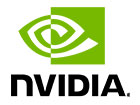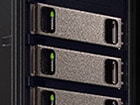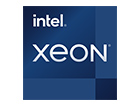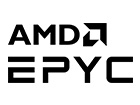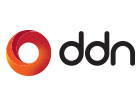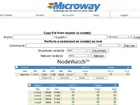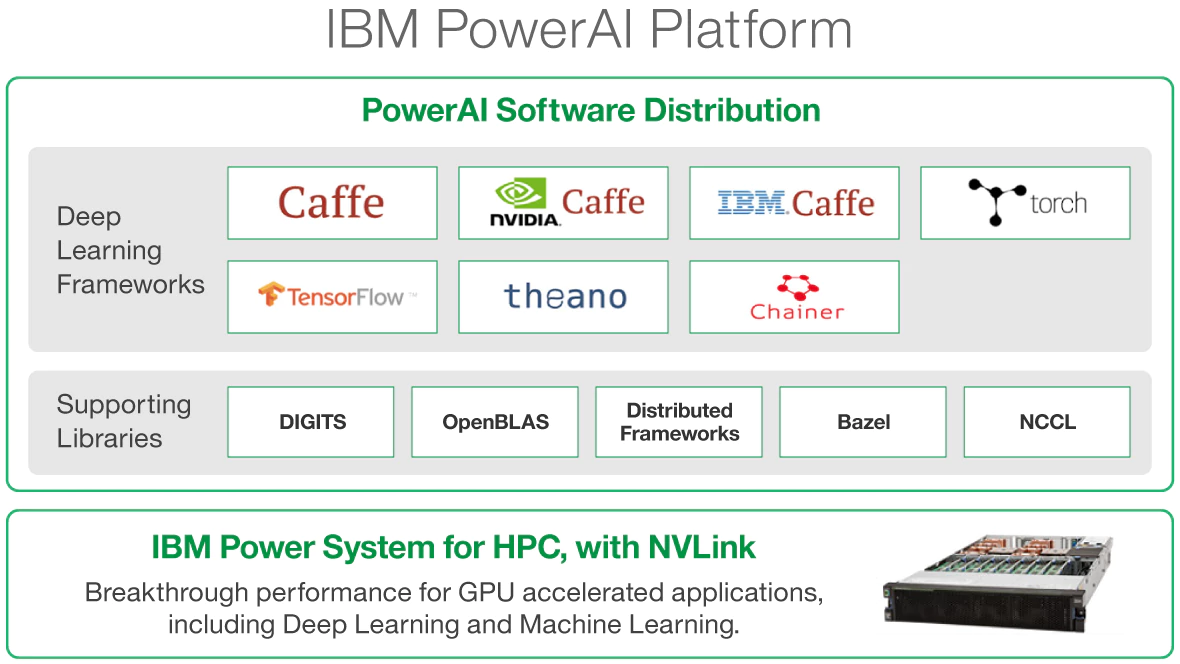Artificial Intelligence (AI) and, more specifically, Deep Learning (DL) are revolutionizing the way businesses utilize the vast amounts of data they collect and how researchers accelerate their time to discovery. Some of the most significant examples come from the way AI has already impacted life as we know it such as smartphone speech recognition, search engine image classification, and cancer detection in biomedical imaging. Most businesses have collected troves of data or incorporated new avenues to collect data in recent years. Through the innovations of deep learning, that same data can be used to gain insight, make accurate predictions, and pave the path to discovery.
Developing a plan to integrate AI workloads into an existing business infrastructure or research group presents many challenges. However, there are two key elements that will drive the decisions to customizing an AI cluster. First, understanding the types and volumes of data is paramount to beginning to understand the computational requirements of training the neural network. Secondly, understanding the business expectation for time to result is equally important. Each of these factors influence the first and second stages of the AI workload, respectively. Underestimating the data characteristics will result in insufficient computational and infrastructure resources to train the networks in a reasonable timeframe. Moreover, underestimating the value and requirement of time-to-results can fail to deliver ROI to the business or hamper research results.
Below are summaries of the different features of system design that must be evaluated when configuring an AI cluster.
System Architectures
AI workloads are very similar to HPC workloads in that they require massive computational resources combined with fast and efficient access to giant datasets. Today, there are systems designed to serve the workload of an AI cluster. These systems outlined in sections below generally share similar characteristics: high-performance CPU cores, large-capacity system memory, multiple NVLink-connected GPUs per node, 10G Ethernet, and EDR InfiniBand. However, there are nuanced differences with each platform. Read below for more information about each.
Microway GPU-Accelerated NumberSmashers
Microway demonstrates the value of experience with every GPU cluster deployment. The company’s long history of designing and deploying state of the art GPU clusters for HPC makes our expertise invaluable when custom configuring full-scale, production-ready AI clusters. One of the most common GPU nodes used in our AI offerings is the NumberSmasher 1U with NVLink. The system features dense compute performance in a small footprint, making it a building block for scale-out cluster design. Alternatively, the Octoputer with Single Root Complex offers the most GPUs per system to maximize the total throughput of a single system.
NumberSmasher 1U with NVLink
- (2) Intel Xeon Xeon Scalable Processor “Skylake-SP” CPUs (clock speed: up to 3.6 GHz)
- Six-Channel DDR4-2666 ECC/Registered Memory (16 slots)
- Up to (2) Hot-Swap 2.5″ 12Gbps drives
- Four SXM2 slots for NVIDIA GPUs, each with 150GB/s connectivity (300GB/s bidirectional)
- Four PCI-Express 3.0 x16 full-height, half-length slots
- Removable Storage: rear USB 3.0 ports
- Two integrated Intel X540 10G Ethernet ports
- IPMI 2.0 with Dedicated LAN Support
- 2000W Redundant High-Efficiency Power Supplies
OctoPuter Single Root
- (2) Intel Xeon E5-2600v4 “Broadwell” CPUs (clock speed: 2.2 GHz to 3.5 GHz)
- Quad-Channel DDR4-2400 ECC/Registered Memory (24 slots)
- Up to (48) Hot-Swap 2.5” 12Gbps drive bays
- Ten PCI-Express 3.0 x16 double-width slots (on a single PCI-Express root complex)
- One standalone PCI-Express 3.0 x16 slot (on separate PCI-Express root complex)
- One PCI-Express 3.0 x8 slot (physical x16)
- Removable Storage: rear USB 3.0 ports
- Two integrated Intel i350 Gigabit Ethernet ports (10G optional)
- IPMI 2.0 with Dedicated LAN Support
- 3200W 2+2 Redundant High-Efficiency Power Supplies
Accessories/Options
- ConnectX-6 200Gb HDR or ConnectX-5 100Gb InfiniBand, InfiniBand, or 10G / 40G Ethernet
- NVIDIA Quadro GPUs for visualization
- TPM 2.0, with optional TXT support
- PGI Accelerator Compilers (with OpenACC support) for GPUs
- Intel compilers, libraries and tools
Support
Supported for Life
Our technicians and sales staff consistently ensure that your entire experience with Microway is handled promptly, creatively, and professionally.
Telephone support is available for the lifetime of your server(s) by Microway’s experienced technicians. After the initial warranty period, hardware warranties are offered on an annual basis. Out-of-warranty repairs are available on a time & materials basis.
To ensure maximum performance and field reliability, our system integrators test and tune every node built. Clusters, once integrated, undergo total system testing to assure total peak system operability. We offer AI integration services for installation and testing of AI frameworks in addition to the full suite of cluster management utilities and software. Additionally, all Microway systems come complete with Lifetime Technical Support.
To learn more about Microway’s GPU clusters and systems, please visit Tesla GPU clusters.
NVIDIA DGX Systems
NVIDIA’s DGX-1 and DGX Station systems deliver not only dense computational power per system, they also include access to the NVIDIA GPU Cloud and Container Registry. These NVIDIA resources provide optimized container environments for the host of libraries and frameworks typically running on an AI cluster. This allows researchers and data scientists to focus on delivering results instead of worrying about software maintenance and tuning. As an Elite Solutions Provider of NVIDIA products, Microway offers DGX systems as either a full system solution or as part of a custom cluster design.
Features

- Arrives with fully-integrated Deep Learning libraries and frameworks
- Software stack includes:
- DIGITS training system
- NVIDIA Deep Learning SDK with the latest CUDA & cuDNN
- Cloud management software/services:
- NVIDIA Cluster Portal (cloud or onsite)
- Online application repository with the major deep learning frameworks
- NVDocker containerized app deployment
- Managed app container creation and deployment
- Multi-Node management with telemetry, monitoring and alerts
DGX-1 Specifications
- 8 NVIDIA Tesla V100 “Volta” GPUs
- 40,960 NVIDIA CUDA cores, total
- Total of 256GB high-bandwidth GPU memory
- 60 TFLOPS double-precision, 120 TFLOPS single-precision, 960 TensorTFLOPS with Tesla V100’s new Tensor Unit
- NVIDIA-certified & supported software stack for Deep Learning workloads
- Two 20-core Intel Xeon E5-2698v4 CPUs
- 512GB DDR4 2133MHz System Memory
- Dual X540 10GbE Ethernet ports (10GBase-T RJ45 ports)
- Four Mellanox ConnectX-4 100Gbps EDR InfiniBand ports
- One Gigabit Ethernet management port
- Four 1.92TB SSD in RAID0 (High-Speed Storage Cache)
- 3U Rackmount Form Factor (for standard 19-inch rack)
- Redundant, Hot-Swap power supplies (four IEC C13 208V power connections on rear)
- Power Consumption: 3200W at full load
- Ubuntu Server Linux operating system
Please note that the ~35″ depth of this chassis (866mm) typically requires an extended-depth rackmount cabinet. Speak with one of our experts to determine if your existing rack is compatible.
DGX Station Specifications
- 4 NVIDIA Tesla V100 “Volta” GPUs with NVLink 2.0 links
- 20,480 NVIDIA CUDA cores, total
- 2,560 NVIDIA Tensor cores, total
- Total of 128GB high-bandwidth GPU memory
- 480 TFLOPS FP16 half-precision performance
- NVIDIA-certified & supported software stack for Deep Learning workloads
- One 20-core Intel Xeon E5-2698v4 CPU
- 256GB DDR4 System Memory
- Dual X540 10GbE Ethernet ports (10GBase-T RJ45 ports)
- Four 1.92TB SSD (one for OS and three in RAID0 for high-speed cache)
- Quiet, liquid-cooled tower form factor (<35dB for office use)
- Power Consumption: 1500W at full load (for standard office electrical outlet)
- Ubuntu Desktop Linux operating system
Support
NVIDIA DGX support provides you with comprehensive system support and access to NVIDIA’s cloud management portal to get the most comprehensive services from your NVIDIA DGX system. Streamline deep learning experimentation by leveraging containerized application management, launch jobs, monitor status and get software updates with NVIDIA cloud management.
What’s Included in NVIDIA DGX-1 Support
- Access to the latest software updates and upgrades
- Direct communication with NVIDIA technical experts
- NVIDIA cloud management: container repository, container management, job scheduling, and system performance monitoring and new software updates
- Searchable NVIDIA knowledge base with how-to articles, application notes and product documentation
- Rapid response and timely issue resolution through support portal and 24×7 phone access
- Lifecycle support for NVIDIA DGX Deep Learning software
- Hardware support, firmware upgrades, diagnostics and remote and onsite resolution of hardware issues
- Next day shipment for replacement parts
To learn more, visit our pages for the DGX-1 and DGX Station.
IBM Power Systems with PowerAI
IBM’s commitment to innovative chip and system design for HPC and AI workloads has created a platform for next-generation computing. Through collaboration with NVIDIA, the IBM Power Systems are the only available GPU platforms that integrate NVLink connectivity between the CPU and GPU. IBM’s latest AC922 Power System release delivers 10x the throughput over traditional x86 systems. Additionally, Microway integrates IBM PowerAI to provide faster time to deployment with their optimized software distribution.
Features
Coherence: for World’s Simplest GPU Programming

Finally, the CPU and GPU speak the same language. The first and only shared (coherent) memory space between CPU and NVIDIA® Tesla® GPU is here. Eliminate hundreds to thousands of lines of specialized programming and data transfers: only with POWER9 and Tesla V100 on Power Systems AC922.
Nearly 5X the CPU:GPU Bandwidth; nearly 10X the Data Throughput
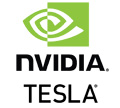
AC922 is the only platform with Enhanced NVLink from CPU:GPU, offering up to 150GB/sec of bi-directional bandwidth for data-intensive workloads. That’s almost 5X the CPU:GPU bandwidth of PCI-E. Each GPU is serviced with 300GB/sec of NVLink bandwidth, nearly 10X the Data Throughput of PCI-E x16 3.0 platforms.
POWER9 with NVLink CPU
The POWER9 platform features up to 24 cores, 3 high bandwidth interfaces to accelerators (PCI-E Gen4, OpenCAPI, Enhanced NVLink), overwhelming memory bandwidth, and high socket throughput.
- Two, four, or six NVIDIA Tesla V100 GPUs with NVLink GPUs (6 GPU configuration only with water cooling)
- NVLink connectivity from CPU:GPU and GPU:GPU for data-intensive and multi-GPU applications
- Up to 48 IBM POWER processor cores (each supporting 4 threads)
- Up to 2TB system memory with memory bandwidth of up to 340GB/sec
- Support for high-speed InfiniBand fabrics and ethernet connectivity
- NVIDIA CUDA 9.0 Toolkit installed and configured – ready to run GPU jobs!
Specifications
- Dual IBM POWER9 with Enhanced NVLink CPUs
(with 24, 22, 18, or 10 core configurations) - Up to 2TB of high-performance DDR4 ECC/Registered Memory (16 slots)
- Up to two 2.5″ 6Gbps drives or Optional NVMe SSD or Burst Buffer
- Six SXM2 slots for NVIDIA Tesla V100 GPUs,
each with Six Next-Generation NVIDIA NVLink™ “Bricks” (300GB/s bidirectional BW) - One shared PCI-Express 4.0 x16 low-profile slot for EDR/HDR InfiniBand (includes muliti-socket host-direct)
- Removable Storage: one front and one rear USB 3.0 port
- Options for Gigabit Ethernet, 10G 40G, or 100G ethernet
- IPMI 2.0 with Dedicated LAN Support
- Dual, Redundant 2000W Power Supplies
Accessories/Options
- 100Gb ConnectX-5 EDR InfiniBand
- High-speed NVMe flash storage and optional Burst Buffer
- PGI Accelerator Compilers (with OpenACC support) for OpenPOWER
- IBM XL compilers and tools
Support
Supported for Life
Our technicians and sales staff consistently ensure that your entire experience with Microway is handled promptly, creatively, and professionally.
Telephone support is available for the lifetime of your server(s) by Microway’s experienced technicians. After the initial warranty period, hardware warranties are offered on an annual basis. Out-of-warranty repairs are available on a time & materials basis.
PowerAI
For more information about Microway’s IBM offerings, please visit our IBM Technology page.
Professional vs. Consumer GPUs
NVIDIA GPUs are the primary element to designing a world class AI deployment. In fact, NVIDIA’s commitment to delivering AI to everyone has led them to produce a multi-tiered array of GPU accelerators. Microway’s engineers often face questions about the difference between NVIDIA’s consumer GeForce and professional Tesla GPU accelerators. Although at first glance the higher-end GeForce GPUs seem to mimic the computational capabilities of the professional Tesla products, this is not always the case. Upon further inspection, the differences become quite evident.
When determining which GPU to use, raw performance numbers are typically the first technical specifications to review. In specific regard to AI workloads, a Tesla GPU has up to 1000X the performance of a high end GeForce card running half precision floating point calculations (FP16). The GeForce cards also do not support INT8 instructions used in Deep Learning inferencing. Although it is possible to use consumer GPUs for AI work, it is not recommended for large-scale production deployments. Aside from raw throughput, there are many other features that we outline in our article at the link below.
The price of the consumer cards allows businesses and researchers to understand the potential impact of AI and develop code on single systems without investing in a larger infrastructure. Microway recommends that the use of consumer cards be limited to development workstations during the investigatory and development process.
Our knowledge center provides a detailed article on the differences between Tesla and GeForce.
Training and Inferencing
There is a stark contrast between the resources needed for efficient training versus efficient inferencing. Training neural networks requires significant GPU resources for computation, host system resources for data passing, reliable and fast access to entire datasets, and a network architecture to support it all. The resource requirement for inferencing, however, depends on how the new data will be inferenced in production. Real-time inferencing has a far lower computational requirement because the data is fed to the neural network as it occurs in real time. This is very different from bulk inference where entire new data sets are fed into the neural network at the same time. Also, going back to the beginning, understanding the expectation for time-to-result will likely impact the overall cluster design regardless of inference workload.
Storage Architecture
The type of storage architecture used with an AI cluster can and will have a significant impact on efficiency of the cluster. Although storage can seem a rather nebulous topic, the demands of an AI workload are a mostly known factor. During training, the nodes of the cluster will need access to entire data sets because the data will be accessed often and in succession throughout the training process. Many commercial AI appliances, such as the DGX-1, leverage large high-speed cache volumes in each node for efficiency.
Standard and High-Performance Network File Systems are sufficient for small to medium sized AI cluster deployments. If the nodes have been configured properly to each have sufficient cache space, the file system itself does not need to be exceptionally performant as it is simply there for long-term storage. However, if the nodes do not have enough local cache space for the dataset, the need for performant storage increases. There are component features that can increase the performance of an NFS without moving to a parallel file system, but this is not a common scenario for this workload. The goal should always be to have enough local cache space for optimal performance.
Parallel File Systems are known for their performance and sometimes price. These storage systems should be reserved for larger cluster deployments where it will provide the best benefit per dollar spent.
Reference DGX-1 Multi-Node Scaling, NVIDIA for more information.
Network Infrastructure
Deploying the right kind of network infrastructure will reduce bottlenecks and improve the performance of the AI cluster. The guidelines for networking will change depending on the size/type of data passing through the network as well as the nature of the computation. For instance, small text files will not need as much bandwidth as 4K video files, but Deep Learning training requires access to the entire data pool which can saturate the network. Going back to the beginning of this article, understanding data sets will help identify and prevent system bottlenecks. Our experts can help walk you through that analysis.
All GPU cluster deployments, regardless of workload, should utilize a tiered networking system that includes a management network and data traffic network. Management networks are typically a single Gigabit or 10Gb Ethernet link to support system management and IPMI. Data traffic networks, however, can require more network bandwidth to accommodate the increased amount of traffic as well as lower latency for increased efficiency.
Common data networks use either Ethernet (10G/25G/40G/50G) or InfiniBand (200Gb or 100Gb). There are many cases where 10G~50G Ethernet will be sufficient for the file sizes and volume of data passing through the network at the same time. These types of networks are often used in workloads with smaller files sizes such as still images or where computation happens within a single node. They can also be a cost-effective network for a cluster with a small number of nodes.
However, for larger files and/or multi-node GPU computation such as DL training, 100Gb EDR InfiniBand is the network fabric of choice for increased bandwidth and lower latency. InfiniBand enables Peer-to-Peer GPU communication between nodes via Remote Direct Memory Access (RDMA) which can increase the efficiency of the overall system.
To compare network speeds and latencies, please visit Performance Characteristics of Common Network Fabrics

